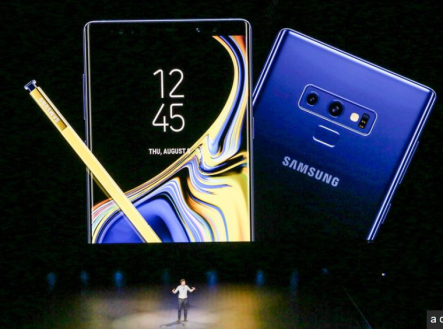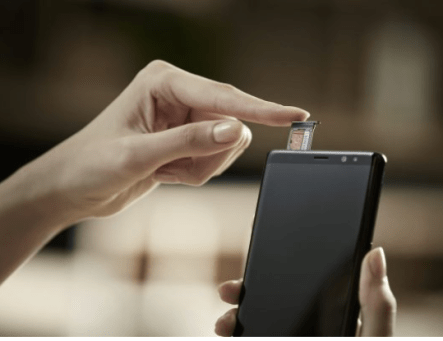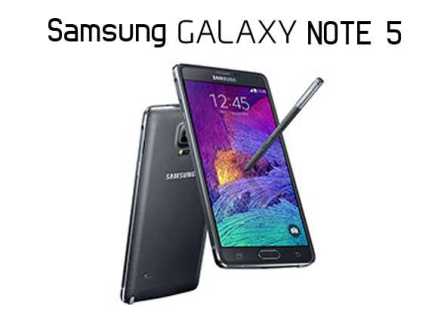Samsung’s annual product conference gathered a big crowd in Brooklyn last week. The main focus was on productivity and performance upgrades across Samsung’s entire collection of devices. The most anticipated gadget was the company’s phablet, Galaxy Note 9. On the exterior, not much has changed, but under the hood some upgrades took place, including a bigger battery, an even bigger screen (6.4-inch) and a more potent S Pen. Additionally, Samsung’s DeX software is now built into the phone, which means that the phone now can be plugged into any external display for a desktop-like experience. Available in two configurations—a 128GB/6GB RAM model for $999, and a 512GB/8GB RAM for $1,250, the phone will start shipping later this month. Design wise, the rear fingerprint sensor was relocated below the camera, but everything else is still in its place: water resistance is still a feature, as is fast wireless charging, expandable microSD storage, the Bixby button and the mighty headphone jack. What’s most baffling about this device is the storage capacity—add a 512GB microSD card into a 512GB Note 9 and you’ll have 1TB of storage and that is pretty insane. Galaxy Note 9 will run on Android 8.1 Oreo without any changes from the user experience on previous phone versions. The battery, a hot topic in Samsung’s world, has been increased to 4,000mAh, the largest so far in a Note. To keep their customers’ cool related to battery safety, Samsung has validated and certified its new batch of batteries through outside companies as well as in house. The heart of the Note 9 is a Qualcomm Snapdragon 845 processor with new optimization to the GPU. A pretty cool feature we still don’t know too much about is the Water Carbon Cooling system, but it sounds...
Galaxy Note8
Attempting Redemption
It’s not easy to follow the footsteps of a maligned predecessor. After last year’s disastrous Note7, many believed the Note8 would never exist. But Samsung has launched the Note8, aiming at a righting the wrongs of the previous iteration. The new phablet, launched in August, does its best to restore customers’ faith in the brand, but not without a hefty price. How big is too big? At 6.3-inches, the device feels like a Gulliver. Don’t even dream about using it with only one hand. The front is all screen with just a thin bezel top and bottom and curved edges that bend towards metal sides. However, the curvature of the screen seems reduced, compared to the Note7—the change means less real estate on the rounded edges, which makes using the stylus easier. For protection, its glass front and back are coated in Corning Gorilla Glass 5.0. The Super AMOLED display sports bright, vibrant colors, with deep blacks and beautiful viewing angles. It features the same virtual home button and pressure-sensitive screen as the Galaxy S8. The fingerprint scanner is placed on the back of the phone, to the right of the camera module, which takes some finger gymnastics to reach it. Samsung offers both iris-scanning and face-scanning unlock systems, so you don’t have to rely on the fingerprint scanner as much. Still, the face-recognition feature doesn’t feel secure enough just yet, even though the South Korean company has improved it and works faster and more reliably. The iris scanner on the other hand, is fast and as secure as the fingerprint method, that if don’t mind holding the phone up, awkwardly close to your face while making your eyes as big as you can. Specs-wise, the Note8 is powered by Qualcomm’s Snapdragon 835 processor,...
Samsung Unpacked
Galaxy Note 5, Galaxy Edge S6 Plus
Samsung decided it was wise to move the Unpacked event up earlier than usual. In previous years, the unveiling of new devices took place a week before Apple’s fall iPhone launch. So last week, New York City hosted the Galaxy Note 5 launch extravaganza a few weeks sooner than previous years, introducing a pair of 5.7-inch devices: the flat, S-pen-equipped Galaxy Note 5 and the curved-screen, no-pen Galaxy S6 Edge Plus. At a first glance, it’s not wrong to say that in many ways, the Galaxy Note 5 is the larger version of the Galaxy S6, just as S6 Edge Plus is the larger version of the S6 Edge. The Galaxy Note 5 seems like a combination of the Galaxy S6 we’ve seen earlier this year with the Note 4 from last year, showing a familiar shape and size. However, even though Samsung recycled a lot of what we saw in the Galaxy S6, it is working hard at replacing the cheap plastic feel its previous devices had, with a glass back and front, held together by a metal chassis. Specs-wise, the Note 5 sports the same octa-core Samsung Exynos processor as the S6, with the difference that this time it’s paired with 4GB or RAM. The device comes with 32 or 64GB of storage, not offering the larger 128GB. What’s even worse is that the microSD card support is gone, and this might upset many of its fans. Further, the 3,000mAh battery is smaller than the one in last year’s Note 4, and the removable battery is also gone. As compensation, the company integrated wireless charging and quick charging. Note 5 has the same 16MP camera with OIS like the S6, and the 5.7-inch Super AMOULED display has the same quad HD resolution....
GSMA Mobile World
Samsung Unpacks Six Appeal
The Mobile World Congress grows bigger every year. Over 93,000 visitors from 200 countries attended the 2015 MWC at the Fira Gran Via and Fira Montjuïc venues in Barcelona; more than 2,000 exhibiting companies showcased their latest products and services across 100,000 net square meters; more than 2,800 international media and industry analysts were present to report on everything that took place at the Congress. Some of the most exciting announcements came from Samsung, Lenovo, Microsoft, Intel, Blackberry, but they are not the only ones. Wearables were present at the event, as well as 5G connected humanoid robots and virtual reality headsets. The star of the event was undoubtedly Samsung, unpacking its newest line of flagship smartphones: the six appeal Samsung Galaxy S6 and Samsung Galaxy S6 Edge. They both have a completely redesigned look and feel, mostly due to ditching the cheap plastic for premium metal and glass; the new design feels somewhat familiar. Technical specification-wise, the two models are similar: a lightning fast 64 bit, Octa-core processor powers the devices, breaking from Qualcomm as its primary supplier for the first time since the Galaxy S2. The new processor, dubbed Exynos 7420 – CPU, is supported by a meaty 3GB RAM and 32/64/128GB internal storage, ditching the micro SD slot – this might upset a few, but probably shouldn’t as the internal storage included should suffice. Both smartphones come equipped with a 16MP back camera with optical image stabilization, autofocus, 4K video and LED flash and a 5MP, wide angle front camera with 1080p@30fps, dual video call and auto HDR. The display measures 5.1 inches with a resolution of 1440 x 2560 pixels (~577ppi pixel density), protected by the latest Corning release, the Gorilla Glass 4. The display is where the two devices differ...
Ready for 5G?
Speeding things up
A new mobile technology has appeared approximately every decade since the first 1G system was introduced in 1981; 2G networks were made public in 1992, 3G rolled out in 2001, and 4G systems were standardized in 2012. Today, most of the world is rolling out 4G networks, but the Koreans are pushing for 5G mobile communications technology. They say it will be delivered to consumers by 2020. Samsung Electronics announced the successful outcome of their attempt to develop the world’s first adaptive array transceiver technology operating in the millimeter-wave Ka bands for cellular communications. More precisely, they’ve been successful in testing the super-fast successor of 4G Long Term Evolution (LTE), hitting a speed of 1.056 Gbps in tests, at a frequency of 28 GHz and to a distance of 2 kilometers. This represents the core of the 5G mobile communications system, this is what will make possible to transmit data up to several hundred times faster than current 4G networks. Once the 5G networks start being commercialized, users will be able to transmit massive data files, high quality digital movies “practically without limitation.” Fast, seamless downloads of 3D movies and games, real-time streaming of ultra high-definition content and even remote medical assistance will be available to subscribers. “The millimeter-wave band is the most effective solution to recent surges in wireless Internet usage. Samsung’s recent success in developing the adaptive array transceiver technology has brought us one step closer to the commercialization of 5G mobile communications in the millimeter-wave bands,” said Samsung executive vice president and head of digital media and communication R&D ChangYeong Kim. Although this sounds like a breakthrough, Samsung is not the first company to have developed the core tech for 5G networks. NTT DoGoMo, in collaboration with the Tokyo Institute of...





